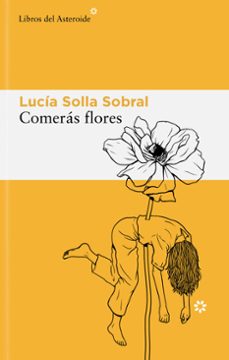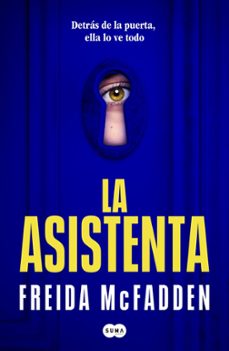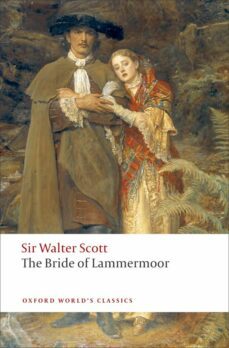Imprescindibles
Ficción
No Ficción
Ciencias y tecnología Biología Ciencias Ciencias naturales Divulgación científica Informática Ingeniería Matemáticas Medicina Salud y dietas Filología Biblioteconomía Estudios filológicos Estudios lingüísticos Estudios literarios Historia y crítica de la Literatura
Humanidades Autoayuda y espiritualidad Ciencias humanas Derecho Economía y Empresa Psicología y Pedagogía Filosofía Sociología Historia Arqueología Biografías Historia de España Historia Universal Historia por países
Infantil
Juvenil
#Jóvenes lectores Narrativa juvenil Clásicos adaptados Libros Wattpad Libros Booktok Libros de influencers Libros de Youtubers Libros Spicy Juveniles Libros LGTBIQ+ Temas sociales Libros ciencia ficción Libros de acción y aventura Cómic y manga juvenil Cómic juvenil Manga Shonen Manga Shojo Autores destacados Jennifer L. Armentrout Eloy Moreno Nerea Llanes Hannah Nicole Maehrer
Libros de fantasía Cozy Fantasy Dark academia Hadas y Fae Romantasy Royal Fantasy Urban Fantasy Vampiros y hombres lobo Otros Misterio y terror Cozy mistery Policiaca Spooky Terror Thriller y suspense Otros
Libros románticos y de amor Dark Romance Clean Romance Cowboy Romance Mafia y amor Romance dramatico Romcom libros Sport Romance Otros Clichés Enemies to Lovers Friends to Lovers Hermanastros Slow Burn Fake Dating Triángulo amoroso
Cómic y manga
Novela gráfica Novela gráfica americana Novela gráfica europea Novela gráfica de otros países Personajes, series y sagas Series y sagas Star Wars Superhéroes Cómics DC Cómics Marvel Cómics otros superhéroes Cómics Valiant
eBooks
Literatura Contemporánea Narrativa fantástica Novela de ciencia ficción Novela de terror Novela histórica Novela negra Novela romántica y erótica Juvenil Más de 13 años Más de 15 años Infantil eBooks infantiles
Humanidades Autoayuda y espiritualidad Ciencias humanas Economía y Empresa Psicología y Pedagogía Filosofía Historia Historia de España Historia Universal Arte Cine Música Historia del arte
Ciencia y tecnología Ciencias naturales Divulgación científica Medicina Salud y dietas Filología Estudios lingüísticos Estudios literarios Historia y crítica de la Literatura Estilo de vida Cocina Guías de viaje Ocio y deportes
Sir Walter Scott
Recibe novedades de SIR WALTER SCOTT directamente en tu email
Filtros
Del 1 al 7 de 7
LAERTES 9788475848525
Ivanhoe, ambientada a lAnglaterra del segle XII, quan el príncep Joan conspirava per desposseir del tron el seu germà Ricard Cor de Lleó, mentre era a Terra Santa en la Tercera Croada, narra les ave
Ver más
Tapa blanda
EIREANN PRESS 9782377937387
The period of "Ivanhoe" is a few months subsequent to "The Talisman." Richard I has abandoned his Crusade, and, after an incarceration in an Austrian prison returns to his English throne to find plots against him headed by his brother John, and also a general state of unrest. Normans and Saxons still quarrel, and the story as a whole gives an admirable picture of feudal times.Ivanhoe is the only son of Cedric the Saxon, and has been disinherited by his father on account of his love for Cedrics ward, the Lady Rowena. lie thereupon goes with King Richard to Palestine and wins renown in the Crusade. He returns to England disguised as a Palmer. Meanwhile his father maintains the ancient Saxon state at his manor of Rotherwood, at odds with the Norman "interlopers." Cedric therefore accords but grudging hospitality to a Norman knight, Sir Brian de Bois-Guilbert, when the latter seeks shelter from a storm, being guided thereto by a pilgrim. During the evening repast, Lady Rowena inquires news of the Crusade and is informed that Ivanhoe has gained fame and the favor of the King. Bois-Guilbert thereupon boasts that he himself would like to meet him at a pending tournament; at which the pilgrim takes up the gage forthe knight ...
Ver más
eBook
OXFORD UNIVERSITY PRESS 9780199552504
The plans of Edgar, Master of Ravenswood to regain his ancient family estate from the corrupt Lord Keeper of the Great Seal of Scotland are frustrated by the complexities of the legal and political situations following the 1707 Act of Union, and by his passion for his enemy's beautiful daughter Lucy. First published in 1819, this intricate and searching romantic tragedy offers challenging insights into emotional and sexual politics, and demonstrates the shrewd way in which Scott presented his work as historical document, entertainment, and work of art. Published in 1819 and 1824, respectively, these titles are typical of Scott's historical soap operas involving revenge, kidnapping, love, political turmoil, and what have you. To help readers understand the Scottish dialect in Scott's writing, these include glossaries as well as scholarly introductions. Both books are based on Scott's original texts. Copyright 2001 Reed Business Information, Inc. The Edinburgh Edition respects Scott the artist by 'restoring' versions of the novels that are not quite what his first readers saw. Indeed, it returns to manuscripts that the printers never handled, as Scott's fiction before 1827 was transcribed before it reached the printshop. Each volume of the Edinburgh edition presents an uncluttered text of one work, followed by an Essay on the Text by the editor of the work, a list of the emendations that have been made to the first edition, explanatory notes and a glossary ! The editorial essays are histories of the respective texts. Some of them are almost 100 pages long; when they are put together they constitute a fascinating and lucid account of Scott's methods of compostion and his financial manoeuvres. This edition is for anyone who takes Scott seriously. Times Literary Supplement The Edinburgh Edition respects Scott the artist by 'restoring' versions of the novels that are not quite what his first readers saw. Indeed, it returns to manuscripts that the printers never handled, as Scott's fiction before 1827 was transcribed before it reached the printshop. Each volume of the Edinburgh edition presents an uncluttered text of one work, followed by an Essay on the Text by the editor of the work, a list of the emendations that have been made to the first edition, explanatory notes and a glossary ! The edi
Ver más
Tapa blanda
Del 1 al 7 de 7





























